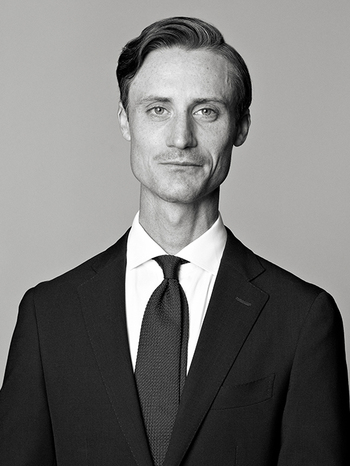Ivan Aguéli
Landscape with houses
Numbered 8. Oil on paper laid down on cardboard, image 16.5 x 23 cm.
Alkuperä - Provenienssi
Private collection, Sweden.
Thence by descent.
Muut tiedot
After deciding to become an artist during a stay in Gotland in 1889, Ivan Aguéli travelled to Paris for the first time in spring 1890. The purpose of the trip was to study painting and once there, Aguéli sought out Émile Bernard, who taught the theories behind the newly established style of Synthetism. This new school of art was developed by Bernard and other artists, including Paul Gauguin, in Pont-Aven, Brittany during the last decade of the 19th century. In short, it was believed that the artist should synthesise his or her visual impressions, painting from memory rather than directly depicting the subject. The result was often paintings with large areas of pure colour surrounded by black outlines.
In 1890s Paris, Aguéli was also inspired by Symbolism, but his interest in Eastern philosophy and religion led him to study Oriental languages and non-European art. In 1894 Aguéli travelled to Egypt, where Bernard had moved somewhat earlier. His fascination with North African culture and Eastern philosophy was now further heightened. He stayed first outside Alexandria and then in Cairo. In 1898 he converted to Islam and took the name Abdalhadi, meaning servant of the guide. For a decade he painted almost nothing at all. Instead, he immersed himself even more in religion and language.
Aguéli's pictures are characterised by intimacy and tranquillity, and his oeuvre is dominated by landscape painting. Gunnar Ekelöf said that it was precisely in landscapes that the artist was most intimate: ‘In landscapes he is perhaps most intimate, however monumental they may be. It seems to me that in them he felt more free from the desire and the contemporary antipathy that man arouses in him.’
Aguéli also lived, as Ekelöf touches on in his analysis, a large part of his life as a poor bohemian, strongly influenced by not only theosophical but also anarchist currents.



































